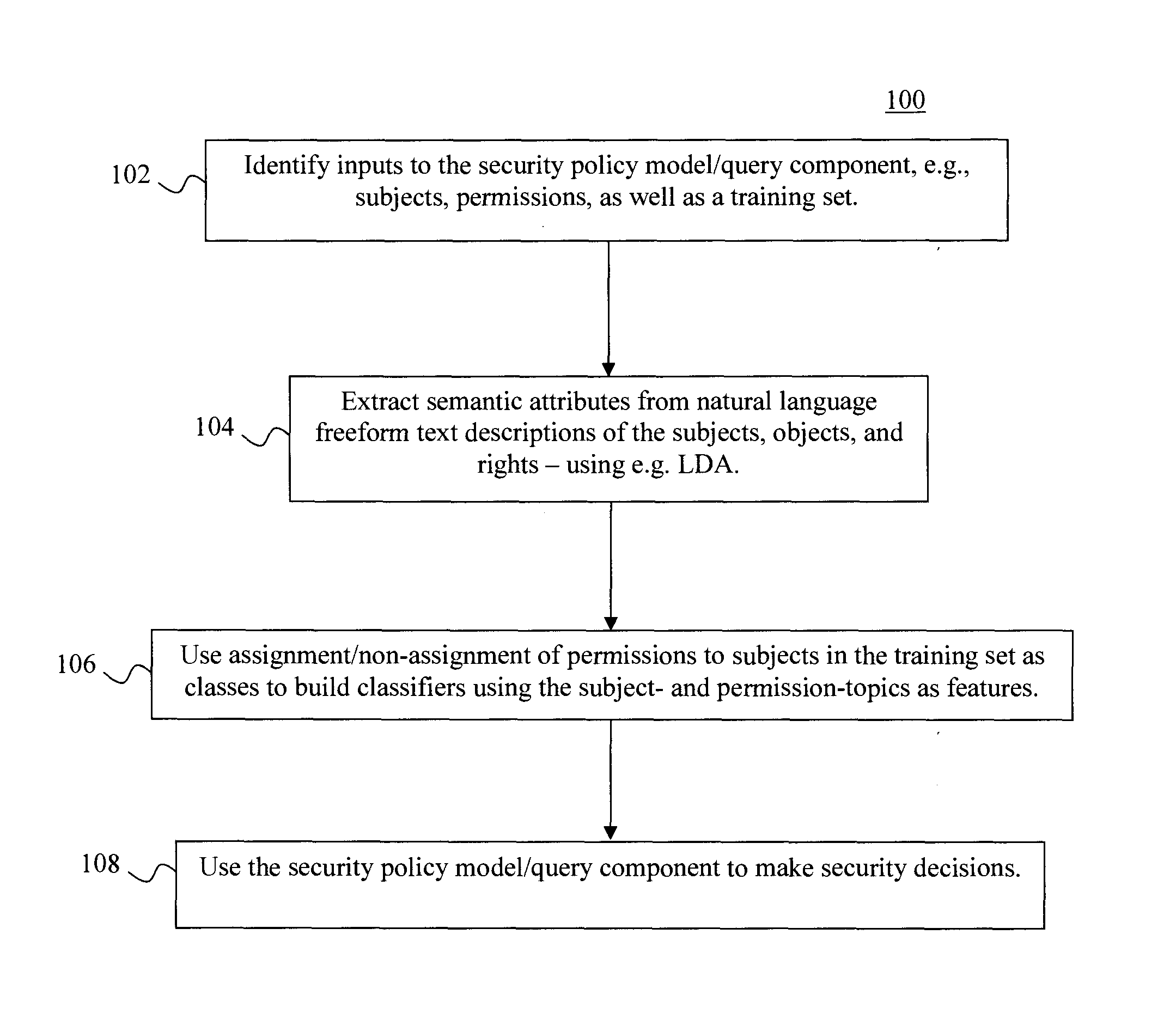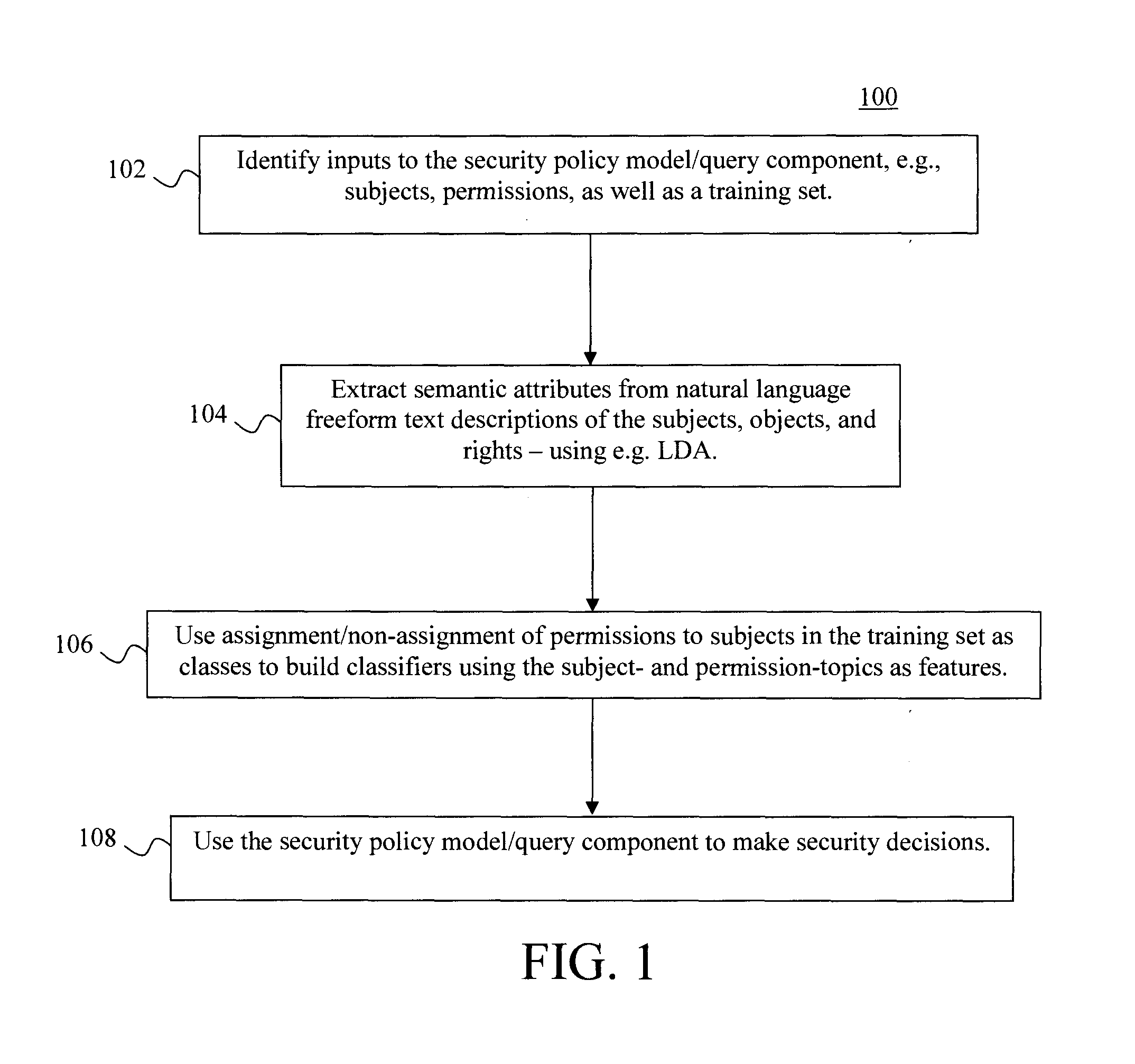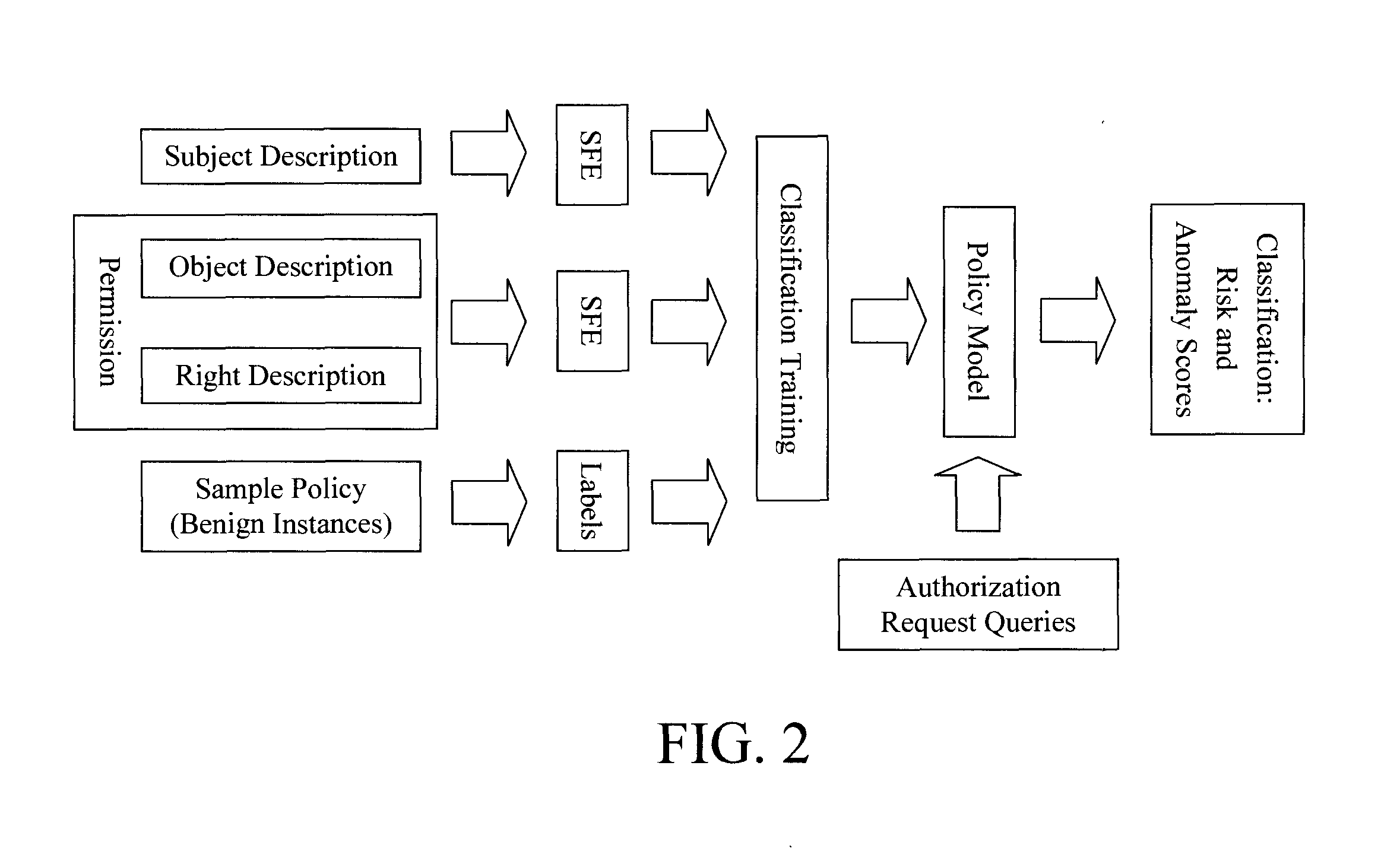Inferring Security Policies from Semantic Attributes
a technology of security policies and semantic attributes, applied in the field of security policies, can solve the problems of not grasping the minimal security controls necessary to enable these functions, or the consequences of their actions, and often without adequate understanding of what is being asked of them
- Summary
- Abstract
- Description
- Claims
- Application Information
AI Technical Summary
Benefits of technology
Problems solved by technology
Method used
Image
Examples
Embodiment Construction
[0012]Provided herein are techniques that permit users to make intelligent choices for security critical decisions by informing users of the risks of granting a permission to an application. As will be described in detail below, the present techniques involve inferring a security policy from semantic attributes of subjects, objects, and rights arising in diverse domains, e.g., permissions requested by mobile applications, access control policies in a large enterprise, filesystem access in a source code control system, Web applications, cloud applications, database systems, etc. The semantic attributes are obtained from natural language freeform text descriptions of subjects and permissions. The freeform text may also be extracted from attribute key-value pairs describing the subjects and the permissions. The inferred security policy can then be used to identify the risk of further policy grant / deny decisions (such as granting or denying permissions to the subjects which allows them ...
PUM
 Login to View More
Login to View More Abstract
Description
Claims
Application Information
 Login to View More
Login to View More - R&D
- Intellectual Property
- Life Sciences
- Materials
- Tech Scout
- Unparalleled Data Quality
- Higher Quality Content
- 60% Fewer Hallucinations
Browse by: Latest US Patents, China's latest patents, Technical Efficacy Thesaurus, Application Domain, Technology Topic, Popular Technical Reports.
© 2025 PatSnap. All rights reserved.Legal|Privacy policy|Modern Slavery Act Transparency Statement|Sitemap|About US| Contact US: help@patsnap.com



